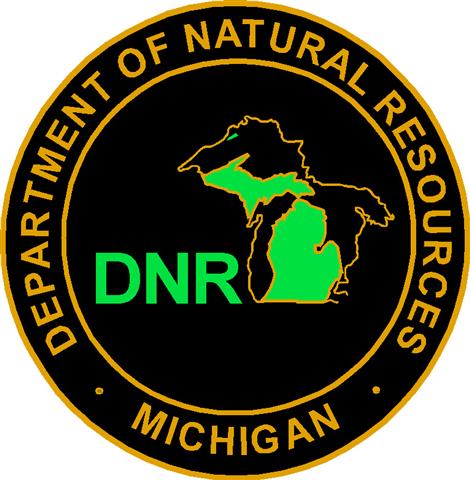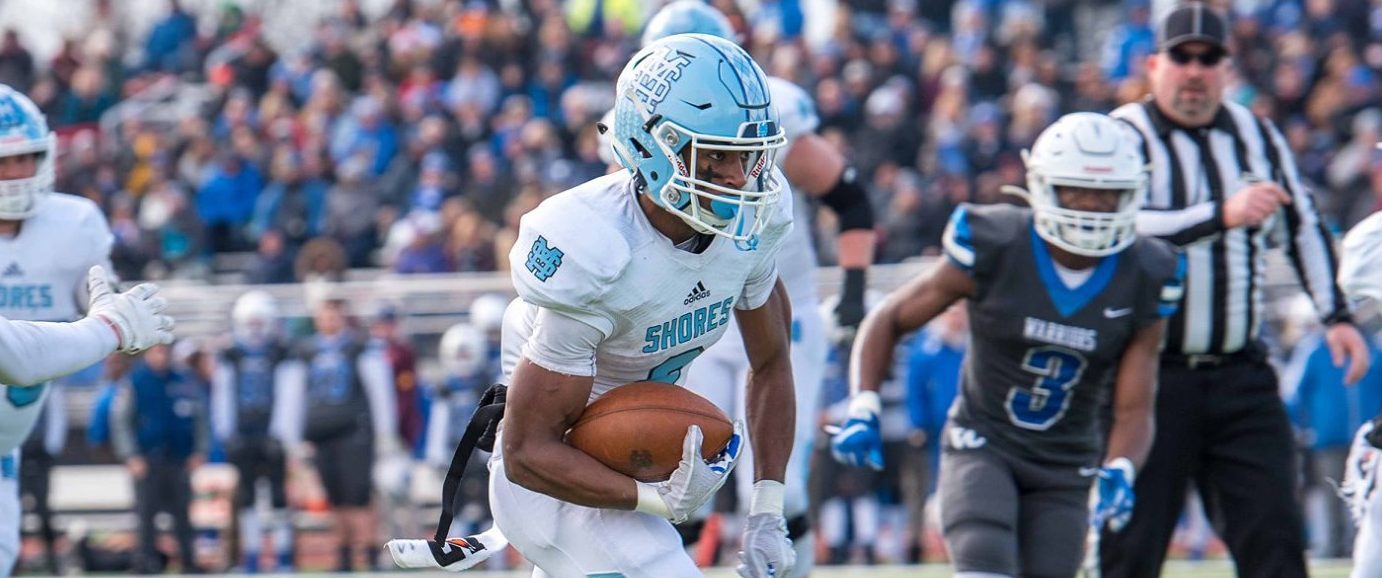The Michigan Department of Natural Resources
Michigan’s muskellunge program turned a huge corner recently as the second crop of Great Lakes muskies produced at a Department of Natural Resources hatchery was distributed across the state in early November.

Bret Tolan, a Department of Natural Resources’ Fisheries Division employee at Wolf Lake State Fish Hatchery, scoops young muskellunge from a retaining pond to be placed on a stocking truck, bound for several sites throughout Michigan.
The DNR has been raising muskellunge (for stocking) at state fish hatcheries for decades, but had always used northern muskies, one of two strains native to Michigan, for broodstock – the mature male and female fish that are kept separate for breeding purposes.
This is the second year the DNR produced strictly Great Lakes muskies.
Northern muskies are native to a few areas of the Upper Peninsula, while the population of Great Lakes muskies (also known as spotted muskies) is more widespread. The DNR began its program with northern muskies because broodstock were more readily available. As a result, numerous lakes in Michigan have been stocked with the northern-strain fish.
“The Great Lakes strain of muskie is indigenous to most areas of Michigan, and there are fewer restrictions on where we can stock this strain,” said Matt Hughes, fisheries biologist at the Wolf Lake State Fish Hatchery in Mattawan, where the muskies were raised. “We want to rebuild our Great Lakes muskie numbers, so using this strain allows us to get them into more Michigan waters.”
There’s another good reason to lean toward the Great Lakes muskies.
Fisheries biologists have noted that as hatchery-reared northern-strain fish move downstream through the watershed, they often wind up in places where Great Lakes muskies are found. That could lead to breeding between the two strains and a genetic degrading of this unique fish.
Biologists decided the outstanding Great Lakes muskie population that has developed in the Lake St. Clair system over the course of the last several decades could now serve as a source of broodstock. DNR Fisheries Division crews collected adult muskies this past May by electrofishing the Detroit River. The fish were spawned on site and the eggs were transferred to the Wolf Lake hatchery for rearing.
The 1.2 million spawned eggs produced 550,000 fry, which were raised in the lab at Wolf Lake for approximately two months until they were 4 to 5 inches long. Roughly 45,000 of them survived and were transferred to four, lined ¾-acre ponds on the hatchery grounds. Of those, 3,000 fish were given to Wisconsin to supplement the genetics of their Great Lakes muskellunge program that also provides an additional backup broodstock supply for Michigan’s program.
DNR personnel drained the ponds and collected just greater than 28,000 muskies (some in excess of 12 inches) which were transported to 18 sites across the state. Among those sites were Thornapple and Big Bear lakes, which will be stocked annually for 10 years in an attempt to create new broodstock lakes.
“We won’t stock these fish in lakes that already have established natural populations,” Hughes said. “We don’t have a complete understanding of those genetics yet. Until we do, we won’t put them in places like the Antrim Chain of Lakes or the Indian River system that have good, naturally sustaining muskie populations.”
Switching to the Great Lakes strain fish was a huge undertaking in terms of management practices and was technically difficult. Muskies are challenging – and expensive – to raise in hatcheries. Hughes estimated the fish that have been stocked cost between $3 and $6 each to produce.
Absolute eating machines, Hughes said muskies are fed heavily from the time they hatch to the time they are stocked. They begin on a commercial dry diet, being fed every 15 minutes, until they reach 2 weeks of age, when they want larger live feeds (like minnows or small fish) and become cannibalistic if they are not fed enough.
“By the time they leave the lab they’re being fed every five minutes, 24/7,” Hughes said.
The young muskellunge are transplanted to ponds pre-stocked with fathead minnows early in the year so the minnows have produced fry. Even then, however, the hatchery staff has to add graded minnows – costing an average of $3 to $6 a pound – until they reach about 6 inches in length. Then the staff switches over to randomly sized minnows, which are a lot less expensive ($2 to $3 a pound).
“I have to check on the ponds every day to see how many minnows are left,” Hughes said. “For the first month, it is not uncommon to order a couple of thousand pounds of minnows every week.”
Hughes said the ponds produced well this year, despite ongoing predation (by raccoons, herons, gulls, kingfishes, mink and the occasional cormorant). It appears the switch to Great Lakes muskellunge is going, in a word, swimmingly.
“The muskie fishing community is supportive of the change,” said Will Schultz, who volunteers as part of the Michigan Muskie Alliance, which contributes both financially and with volunteer labor at the DNR hatchery.
He said it’ll likely be 12 to 15 years before the fish that have been stocked in the proposed broodstock lakes can be used for an egg take. It will take that much time to have enough mature fish from several different year classes to provide the genetic diversity necessary for egg collection.
No matter the time frame, the DNR’s Fisheries Division is committed for the long haul. Because of that effort and the support of the volunteer community, anglers can expect to see a growing population of Great Lakes muskies making their way through Michigan waters for many years to come.
“I think everyone is pretty happy,” Hughes said. “It’s been a pretty successful season, from egg take to harvest.”
To learn more about how the Department of Natural Resources manages its fish production responsibilities, visit www.michigan.gov/hatcheries. Find out about upcoming meetings, events and volunteer opportunities with the Michigan Muskie Alliance at www.michiganmuskiealliance.org








